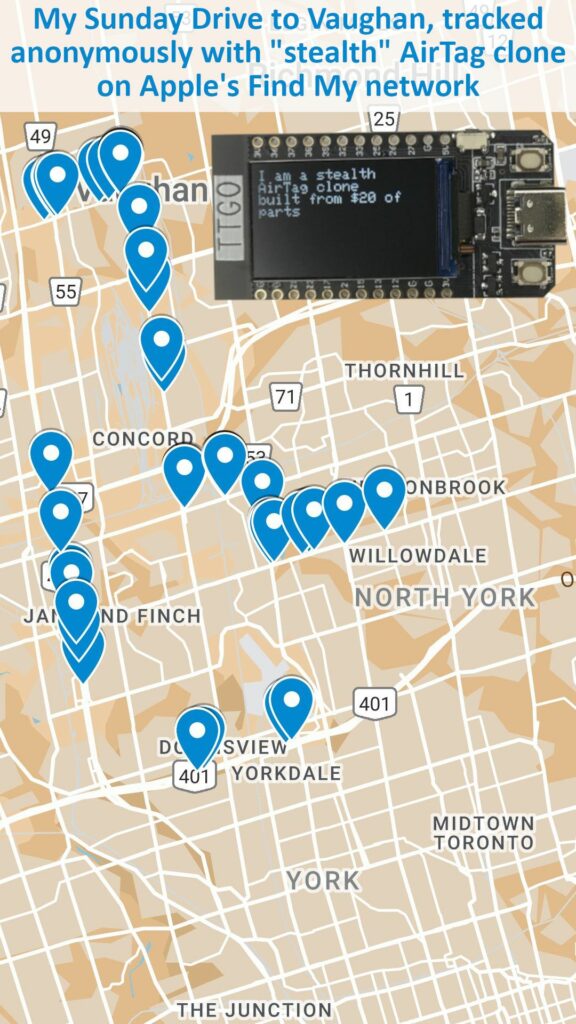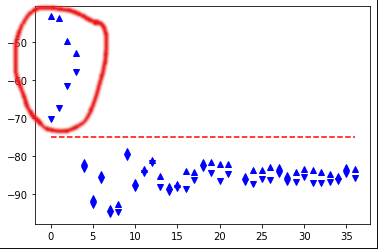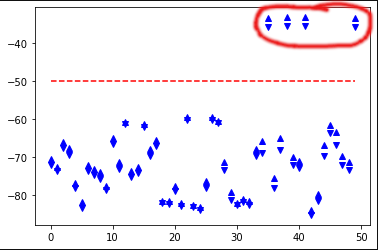Exploring Bluetooth Trackers at GeekWeek 7.5
I recently participated in GeekWeek 7.5, the Canadian Centre for Cyber Security’s (CCCS) annual cybersecurity workshop. I was assigned to a team of peers in banking, telecom, government and academia. We were to work together on analyzing how Bluetooth item trackers (eg: Apple AirTags, Tile) can be covertly used for malicious purposes, and developing processes and tools to detect them.
It was my first time attending the event, and I wasn’t sure what to expect. Here’s how it worked. The CCCS builds teams from the pool of GeekWeek applicants, based on interests and skills identified by the applicant in the application process. Leading up to the event, CCCS appoints a team lead, who defines goals for the team.

I was appointed as a team co-lead and assigned a team. My co-lead and I were to define a challenge in the IoT space. Inspired by recent headlines concerning stalking facilitated by AirTags, my co-lead suggested analyzing how item trackers can be covertly used for malicious purposes, and developing processes and tools to detect them.
The team worked in 5 streams:
Collecting Data
An existing baseline data collection tool was modified for our purposes for logging Bluetooth LE data for further analysis.
https://github.com/raudette/geekweek-7.5_1.3_loggingble
Detect Stealth AirTag Clones
“Can you find my stealth AirTag clone in this data?” we asked the data scientist on our team.
🍰
As various news outlets reported about the malicious use of these trackers, manufacturers implemented anti-stalking measures which were quickly defeated by research efforts such as find-you. The find-you tracker avoids detection by rotating through identifiers - to an iPhone, it appears no differently from walking past other people with iPhones.
The team built find-you stealth trackers which rotated through 4 keys and went to work. We wanted to see if we could develop a technique for detecting and identifying the trackers. Data was collected by stalking ourselves, walking through busy urban areas with find-you trackers, and logging all Apple Find My Bluetooth advertisements.
Our hypothesis was that we could identify the find-you tracker based on signal strength patterns. We believed that the signal strength of the find-you tracker we were wearing would be consistent over time, as its location relative to our data logger wouldn’t change, and other Find My devices would vary, as we walked past other pedestrians carrying devices.
A team member assessed the data and built a model for identifying the keys based on signal strength.
The stealth tag, with its four keys, could easily be picked out in the data.
We experimented with randomizing the transmit power and time between key rotations of the stealth tracker.

Even at its lowest transmit power, the stealth tag’s four keys could still be could easily be picked out in the data.
Enhancing Stealth AirTag Clones
We created a “SneakyAirTag”, which tried to increase the stealthiness of Positive Security’s Find-You tag, found here: https://github.com/positive-security/find-you, which itself was built on the excellent work of: https://github.com/seemoo-lab/openhaystack
It tries to improve the stealthiness as follows:
- Rotates keys on a random interval, between 30 and 60 seconds (Find-You rotates every 30 seconds)
- Transmits at random power levels, in an attempt to avoid detection based on a consistent signal strength.
In our testing, even with these changes, we were still able to identify stealth tags in an area with other Apple Find My devices. Even at the ESP32’s lowest power level, the stealth tracker can be identified as the signal strength of the stealth tracker is higher than other devices the vicinity of the tracked subject.
Further areas for exploration would be reducing signal strength with shielding material or some other means, and adding an accelerometer such that the device only transmitted Bluetooth advertisements when the target subject is in motion.
Building a Clone Tile Tracker
The team was inspired by Seemoo Lab’s work on the AirTag. Could we do similar things with the Tile tracker?
And, we figured out some things, but got stumped. Tile uses the Bluetooth MAC address to track a Tile. We got our clone Tile to the point where we could take MAC of a tile registered to our account, load our firmware with the MAC onto an ESP32, and walk around with our Tile app and it would track it.
But, it seemed like if we sent our Tile’s MAC ID to someone else to load on to their ESP32, and track with their Tile app, it wouldn’t report the location. And, although Tile reports thousands of users in my area, even a genuine Tile didn’t seem to get picked up by other Tile users walking through office food courts, malls, or transit hubs. As a result, at the end of two weeks, many questions remained unanswered.
We also experimented with altering transmit power and rotating through MAC addresses as a means of avoiding detection. Our work can be found here:
https://github.com/raudette/geekweek-7.5_1.3_tileclone
Blueprints
One of our team members had access to a few HackRF One Software Defined Radios (SDRs), and set about learning how to use them. They wanted to duplicate the results of a paper that demonstrated that with an SDR, one can identify individual bluetooth devices based on differences in how they transmit as a result of minute manufacturing imperfections. The team member called their Bluetooth device fingerprint a Blueprint, and documented their work here: https://github.com/raudette/geekweek-7.5_1.3_blueprint
Overall Experience
The experience of stepping away from the day-to-day, learning about different technologies and building things was very similar to my previous experiences participating in corporate hackathons.
What made GeekWeek exciting for me was leading a team of people from different companies, with different professional backgrounds. At a corporate hackathon, everyone already knows their teammates, what they’re capable of, they share the same corporate culture, they typically work on the same software stack, and have the same collaboration tools pre-loaded on their laptops. At GeekWeek, it was interesting just breaking down the problem, and finding out who had what tools, what experience, and was best suited to take on a task. Also, it was interesting to hear about everyone’s professional work - some were really pushing boundaries in their fields.
I hope to participate again in the future!
